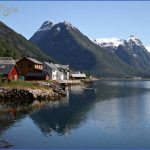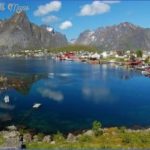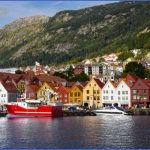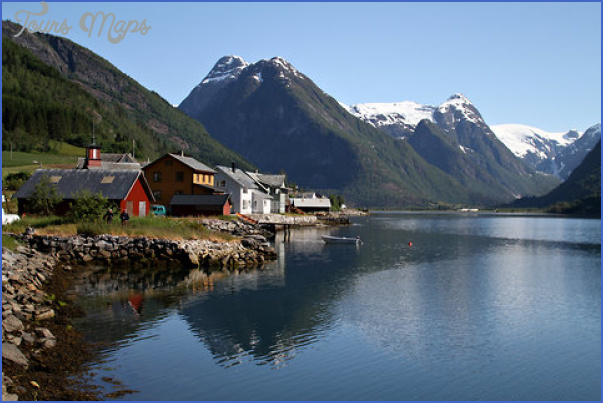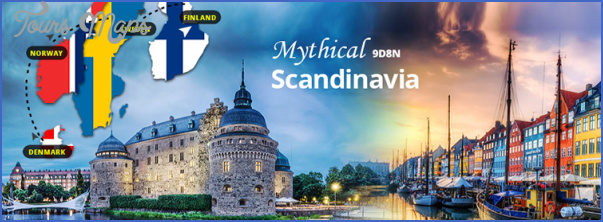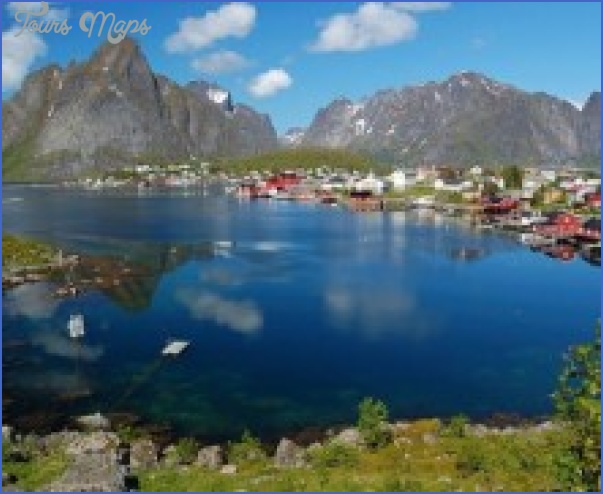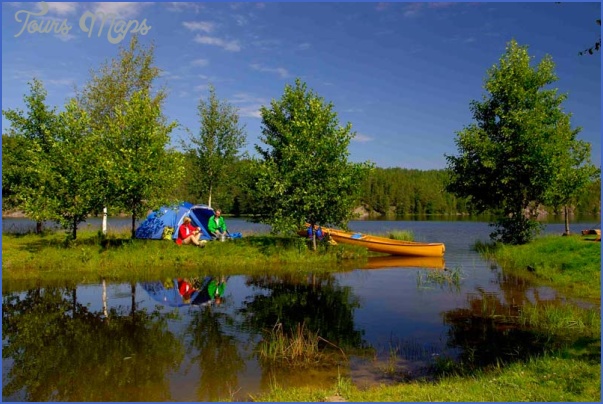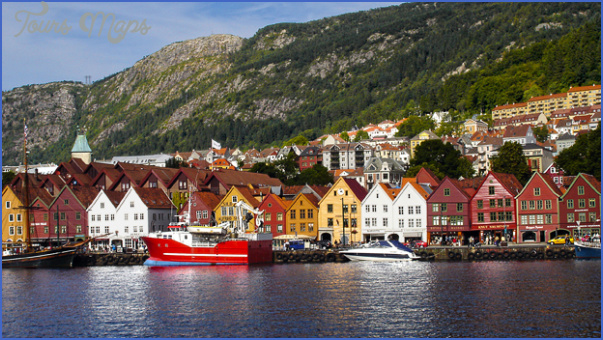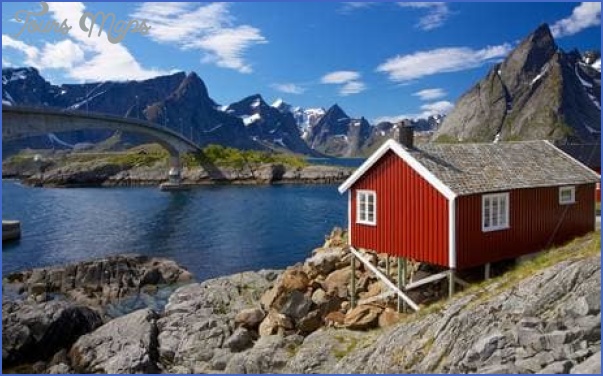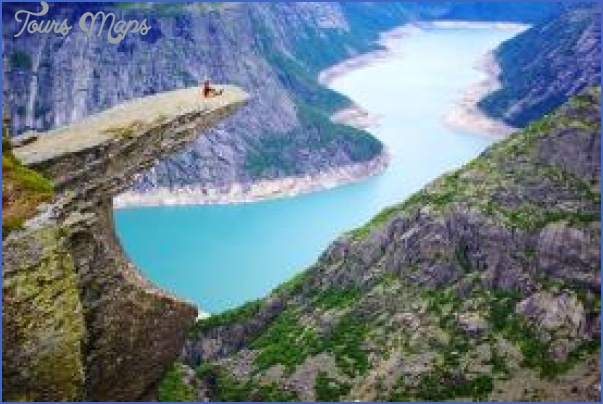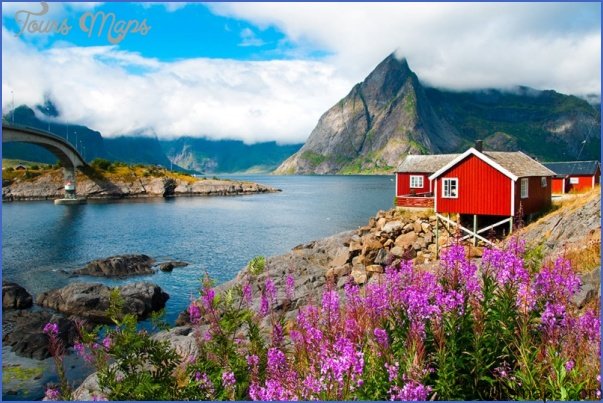Climate
Extending as it does for more than 1800 km (1100 miles) from north to south, Scandinavia shows great climatic variations. Denmark and southern Sweden, with their cool, temperate maritime climate, lie in a region of transition to the Central European climatic zone (annual rainfall between 400 and 800 mm (160 and 320 in.), maximum rainfall in August, autumn and winter storms in the west, very changeable weather).
Norway, extending far beyond the Arctic Circle, has Arctic climatic features only in those parts of northern Lapland which lie far from the sea, with temperatures occasionally falling as low as about 50 °C (-58 °F) (Karasjok 51 4 °C (-60-5 °F) and of course in the outlying territory of Spitzbergen in the Arctic Ocean. Most of the country is warmed in winter by the Gulf Stream and by southwest winds. Thus Svolvaer in the Lofotens, lying beyond the 68th parallel, has the same mean temperature in January (-1-7 °C (28-9 °F)) as Negotino, 3000 km (1800 miles) farther south near the Yugoslav-Greek border (lat. 41 N; alt. 147 m (480 ft)). The southwest winds, often stormy in autumn and winter, produce heavy rainfall, reaching an annual 2200 mm (860 in.) on the outermost coastal strip (falling mainly in autumn and winter). The plateau glaciers in southern Norway, like the huge Jostedalsbre (length almost 100 km (65 miles), area 1 000 sq. km (385 sq. miles)), owe their great extent to these high precipitations in winter (with annual averages of up to 3000 mm (1180 in.) on particularly exposed mountains). On Kebnekaise, 700 km (440 miles) farthernorth in Swedish Lapland but in a region with relatively low precipitations, the permanent snow line is considerably higher in spite of the long Arctic night and the much more severe cold in winter. In contrast to the extreme maritime climate of the west coast, with small variations in temperature, the valleys farther east, lying in the rain shadow, show markedly continental climatic features, with great seasonal variations in temperature and less rainfall than in the driest parts of Germany, so that in the upper Gudbrandsdal, for example, artificial irrigation is required. The fall in temperature towards the Arctic latitudes is more marked in Norway in summer, when the relative warming potential of the Gulf Stream is less. The differences in temperature between north and south in the interior of the country are less in summer, since the long period of sunshine in the higher latitudes produces more effect in large land masses. Thus temperatures of over 30 °C (86 °F) have been frequently recorded in Lapland, but temperatures in this range never occur on the west coast.
The continental character of the climate in eastern Norway becomes still more marked in Sweden and Finland. In summer the temperature increases from west to east in consequence of the more rapid warming up of the land masses and the lesser cloud cover in the lee of the west winds. The continental nature of the climate is, however, mitigated to some extent by the cooling effect of the Baltic and the Finnish Lake Plateau; in winter these expanses of water are without influence on the climate, since they are then covered with snow and ice at least as far as the latitude of Stockholm.
The coasts of Denmark and the west coasts of Sweden and Norway usually remain ice-free. Snow usually lies in southern Sweden from December to February, in central Sweden and southern and central Finland from November to March or April, in Lapland from October to May. In Denmark (apart from the west coast of Jutland) and SkSne and on the south and southwest coasts of Norway there are average temperatures below freezing point for up to 1 month; in the Norwegian and northern Swedish mountains they are found for anything up to 7 months. Number of days with midnight sun or Arctic night Kiruna 45, Tromso 64, Hammerfest 72, North Cape 78, Spitzbergen 127.
Scandinavia Travel Photo Gallery
Maybe You Like Them Too
- The Best Cities To Visit in The World
- World’s 10 Best Places To Visit
- Coolest Countries in the World to Visit
- Travel to Santorini, Greece
- Map of Barbados – Holiday in Barbados

